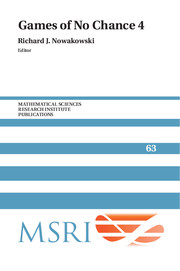A strong placement game G played on a board B is equivalent to a simplicial complex ΔG,B. We look at weight games, a subclass of strong placement games, and introduce upper bounds on the number of positions with i pieces in G, or equivalently the number of faces with i vertices in ΔG,B, which are reminiscent of the Kruskal–Katona bounds.
1. Introduction
Our goal in this paper is to study complexes of placement games (Definition 1.1). In [3] we demonstrated that to a placement game G played on a board B one can associate a simplicial complex ΔG,B, where G can be considered as a game played on ΔG,B.
The main question addressed in this paper is: What complexes can be legal complexes of a placement game?
We give partial answers to this question in specific cases: when the board is a path, a cycle, or a complete graph (also see [5]).
We begin by introducing some of the concepts needed. A complete introduction is given in [3].
Definition 1.1. A strong placement game is a combinatorial game played on a graph which satisfies the following:
(i) The starting position is the empty board.
(ii) Players place pieces on empty spaces of the board according to the rules.
(iii) Pieces are not moved or removed once placed.
(iv) If it is possible to reach a position through a sequence of legal moves, then any sequence of moves leading to this position consists only of legal moves.
The TRIVIAL placement game on a board is the placement game that has no additional rules.
Throughout this paper “placement game” refers to a strong placement game. Since placement games are played on a graph, we use the terms board and graph, and space and vertex interchangeably.
A basic position is a board with only one piece placed. Any position, whether legal or illegal, in a placement game can be decomposed into basic positions.
Definition 1.2. A simplicial complex Δ on a finite vertex set V is a set of subsets (called faces) of V with the conditions that if A ϵ Δ and B ⊆ A, then B ϵ Δ. The f -vector ( f0, f1, … , fk) of a simplicial complex Δ enumerates the number of faces fi with i vertices. Note that if Δ ≠ ∅, then f0 = 1.

